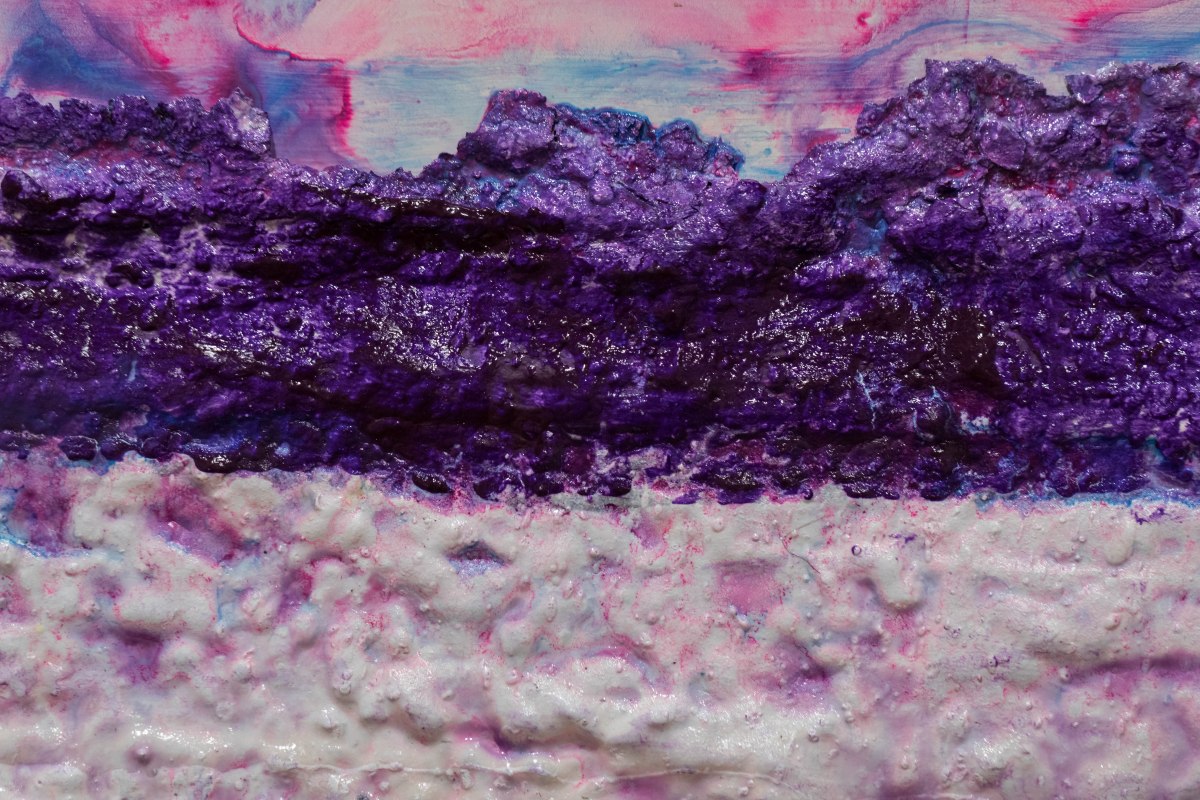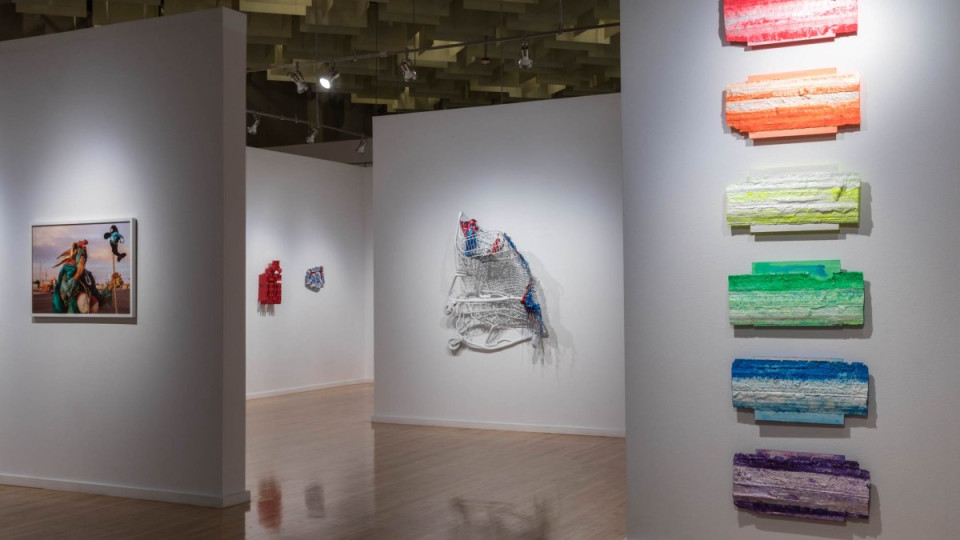Barrick volunteer Michael Freborg — the author of those earlier reflections on our Preservation exhibition — has been thinking about Plural. He writes —
There is something tranquil about the sound of footsteps on wooden floors. I am seated at the other end of the East Gallery today. Casual visitors come and go, wandering reverently through the new exhibit with only an occasional soft mutter. Paintings and artwork are mounted everywhere. Some of them look literally good enough to eat. Paint-sculpted pieces of “laffy taffy” in bright, delicious colors are lined up vertically on the wall of the center gallery. The textured swaths of blue, green, orange, and purple with their white middle layers remind me of frosted cake. These freshly-baked sweets for the soul bring a smile to my face each time I walk by. On a small white pedestal to the right of my desk, chips and breakfast cereal have been perfectly replicated in intricate Native American beadwork. The artist has woven something from her own cultural heritage into common household goods. Even those shimmering glass beads look like rock candy to me.
Whenever I am working on an artist’s biography, I see the artist’s style in other works on display in the gallery. Rita Deanin Abbey uses geometric shapes to emphasize movement, color, and form. Examples of artists using this style can be seen throughout the exhibit. Inside the center gallery, one artist has converted a song into vertical bars using an acrylic rainbow of colors. The painting is small, but contrasts sharply with both its white frame and the white wall surrounding it. Mounted to the south of my desk is an illustration that is far more psychedelic. As viewers shift their gaze, its meandering lines sway back and forth, producing a dizzying, trance-like effect. Beside the entrance to the Braunstein Gallery is an incredible three-dimensional display made of eight jagged pieces jutting from the wall like shards of glass. The six fragments on the top have a ghastly, tormented face drawn on each of them. Broken mirrors are painted on the bottom two. Its shades of black and grey set a morbid tone as the artist delves into the multifaceted identities of human beings. Like Abbey, the artist uses color and form to create a certain mood. The three-dimensional fragments give it a sense of motion. And just as the artist of the “laffy taffy” uses bright colored paint layers to stimulate taste buds, the drab colors of this display evoke feelings of melancholy.
The standout piece of the exhibit is a makeshift mermaid outfit made of turquoise, silver, and pink cloth. The flamboyantly-dressed mannequin with its golden sea-crown casts a horned silhouette on the wall behind it. The more I stare at the figure’s shadow, the more it resembles something mythical. Sometimes the best art is accidental. The current exhibit is more colorful than the last, but I find myself more intrigued by the shadows cast by the intense lighting in the gallery. It seems like these dark shapes are an exhibit of their own. One thing is for sure. Art is everywhere. Even when it’s unintentional.

Top photograph, from r – l: Mikayla Whitmore, Laurens Tan, Tom Pfennerstall, Brent Holmes, and Jacqueline Ehlis. Bottom photograph: detail of Jacqueline Ehlis, Laffy Taffy: Grape, 2004. Photography by Mikayla Whitmore.
The artists whose work Michael describes are Jacqueline Ehlis (“textured swaths of blue, green, orange, and purple”), Noelle Garcia (“chips and breakfast cereal”), Tim Bavington (“converted a song into vertical bars”), Julie Oppermann (“a dizzying, trance-like effect”), Daniel Samaniego (“eight jagged pieces jutting from the wall”), and Aaron Sheppard (“a makeshift mermaid outfit made of turquoise, silver, and pink cloth”).
Originally posted April 21, 2018

